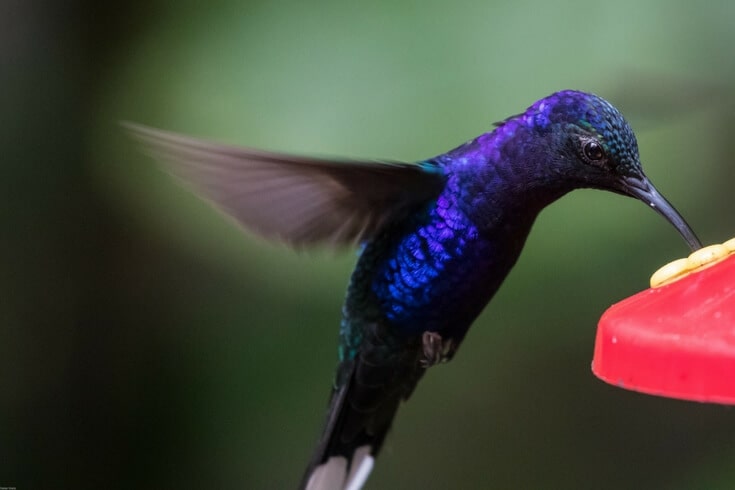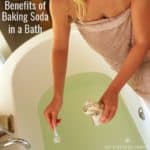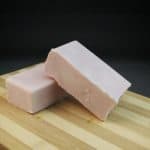Discover how you can make an easy hummingbird food recipe. The ingredients are just water and sugar. But it’s not as simple as filling the feeder. You’ll need to follow a few tips to make sure there’s nothing added that’s harmful to the birds such as red dye.

If your diet consists of nothing but hummingbird food, you’ll likely have lots of cavities. You’ll also become overweight, diabetic and prone to mood swings.
You see, hummingbirds are the ultimate sugar junkies. Yet they have such petite, slender figures. That’s because hummingbirds have one of the fastest metabolisms on the planet.
In fact, the ruby-throated hummingbird is thought to have the highest rate of metabolism. They can flap their wings over 70 times per second. And their pulse would induce a heart attack in a human in seconds: over 1,000 beats per minute.
But before you envy the metabolic rate of the hummingbird, consider this. Let’s say you weigh 100 pounds. If your metabolism equals that of a hummingbird, you would need to eat up to 300 pounds of sugar a day.
The next best thing to eating like a hummingbird is learning how to make hummingbird food. Within a short time of learning how to make homemade hummingbird food, your backyard will be an oasis for these frenetic miniature winged miracles.
Hummingbird food recipe rule #1: no dye or else little birdy dies
If you love hummingbirds and want to see them thrive in your backyard, let’s get something out of the way right up front.
Some people, in order to attract hummingbirds, will add red dye to homemade hummingbird nectar. But red dye is unnatural and can potentially harm the hummingbirds.
Instead of trying to use red to attract a hummingbird, think like a bull matador. A matador uses a red cape to get the bull’s attention. You don’t need a large cape for a hummingbird. Just use a red flag or bandanna and tie it by the hummingbird feeder. Or get a bright red feeder like you see in the picture, below.

Hummingbird food recipe rule #2: don’t use fake sugars
If you’re going to make hummingbird food all you need is white sugar. Do not use artificial sugars. Don’t use corn syrup. And don’t try to play the role of an aviary nutritionist thinking that a low carb sugar like stevia or monkfruit will be a healthier choice for the birds. Nope, all you need for a DIY hummingbird recipe is white sugar and water. Repeat: white sugar and water, nothing else.
The problem with artificial and low-carb sugars is they have zero calories. Hummingbirds need real sugar to fuel their insanely high metabolism. Furthermore, who knows what effect artificial sugar has on delicate and tiny hummingbird organs.
Is Honey Good For a Hummingbird Recipe?
But just because a sweetener is natural doesn’t mean it’s safe. Honey can be fatal to hummingbirds. That’s because honey can quickly break down while exposed to heat. The honey ferments. While fermented foods are good for the human gut, for hummingbirds, the bacteria can kill them.
While you might think honey is more nutritious than white table sugar, hummingbirds don’t care. They just want the sucrose to be able to flap their wings a mind-boggling 4,000-plus beats per minute.
Another example of an alternative sugar some people use to feed hummingbirds is beet sugar. But beet sugar can contain genetically-modified organisms (GMOs).
Remember, hummingbirds don’t need special sugar. Regular white sugar or cane sugar is just fine for hummingbird food.
What is Hummingbird Nectar?
Most people know nectar as the fluid that’s collected by honeybees to make honey. Or, in the botanical realm, it’s any sugary fluid secreted by flowering plants to encourage bees to pollinate them.
In nature, hummingbirds prefer yellow water iris, trumpet honeysuckley, blackberry and comfrey. These are naturally high-yielding nectar plants.
When you make nectar to attract the birds to your backyard, the goal is to mimic the nutritional content of these plants. And what nutrition do the birds get from nectar? The answer is quick-burning carbohydrates.
But for all intents and purposes, for the DIY recipe for hummingbird food–sugar water–is nectar. However, you need to know the proper ratio of sugar to water before you’re ready to make it.
Speaking of which….
How many parts sugar to water in a hummingbird food recipe?
Most experts suggest the best nectar ratio is 1:4 sugar to water. In other words, one part sugar, four parts water. However, there are a couple times when you might want to lower the ratio to 1:3.
Most likely, if you have a 1:4 ratio of nectar in a top-quality feeder, you’ll have no problem attracting the birds. However, if you want to increase your chances of having them visit your property, start welcoming the birds to your home by lowering the ratio to 1:3 (one part sugar, three parts water).
The other time you may want to lower the ratio to 1:3 is a few weeks before the fall goes in full swing and temperatures start dipping. This will help fatten up the birds for the late fall and winter.
How many hummingbirds will visit your feeder?
According to these amateur bird enthusiasts in Ohio, in the busy season (summer), if you provide a half-gallon of homemade nectar a day, approximately 140 birds will visit your feeder. That’s per day!
Based on the mathematical formula the bird enthusiasts used, each bird consumes almost a half ounce of nectar per day.
However, keep in mind that the less you dilute the mixture, the less often you’ll see the birds. In other words, if you keep the 1:3 ratio all summer, there may be less activity at your feeder. This is because the more calories the hummingbirds consume per visit to your feeder, the less frequent they’ll need to return.
In other words, if you want to see the hummingbirds more often, add more water. But for their best interest, remember to scale the ratio back to 1:3 by the end of fall.
How often do you have to replace hummingbird food?
Suppose you have a very large feeder that doesn’t get all used up every day. Can you just leave the nectar in the feeder until it runs out. According to a Facebook page devoted to all things hummingbird, the answer is: no. At minimum, change the nectar every few days.
Definitely do not go more than 5 days, especially in the dog days of summer. The reason for this is the same reason honey is bad for hummingbirds: sugar water quickly breaks down in the heat. The bacteria and mold from the old nectar can sicken the birds.
What should you do with hummingbird food while on vacation?
If you’re only going away for a long weekend, no worries. Just fill up the feeder to the brim.
If you’re going away for a much longer trip, you can a few different things:
- Have a friend refill the feeders every 3-5 days (as long as they know how to make hummingbird food)
- Plant nectar-rich flowers in your backyard. Visit your local nursery before summer begins and ask an employee which plants are best in your area for attracting birds.
- Place overripe bananas near the feeder. The birds will eat the fruit flies that will be attracted to the bananas.
What type of water is best for a DIY hummingbird recipe?
Purified water is best. For best results and for the health of the birds, do not use municipal city water. Without doubt, not all municipal city water is equal. Some cities do a better job than others at filtering out pollutants and chemicals. Even if you live in a city that has relatively good drinking water, at the very least, make sure the water gets filtered before making homemade hummingbird nectar.
To be on the safe side, you can always boil the water. An obvious tip but one worth mentioning is make sure you allow the water to cool. Also, add the sugar after the water cools. The reason why is that when you boil water, some of the water evaporates. This will alter the hummingbird food ratio of sugar to water.
You can always store extra nectar in your fridge. But hummingbirds won’t like very cold nectar. So, the question then becomes….
Can you microwave hummingbird nectar?
Yes. You can microwave homemade nectar for 30 seconds. This will help break down the sugar while slowing down the chemical breakdown that produces harmful bacteria for the birds.

Does Hummingbird Food Attract Ants?
Yes. Sugar ants also love nectar, too. It’s great to have a full feeder. But make sure none of the nectar spills to the ground, otherwise not just birds will be visiting your backyard. To reduce the chance that ants will invade hummingbird turf, you can set some homemade or store-brought ant moats.
Another ant deterrent is tying bay- or mint leaves around the feeder pole and feeder wire. But whatever you do, make sure not to spray any insecticide on a bird feeder. And don’t apply any foreign substance that can damage hummingbird wings such as Vaseline.
Fresh Hummingbird Food
Hummingbirds are sensitive eaters in one sense. While they may not be picky eaters, after all, they only need nectar and some insects, they do prefer fresh ingredients. Therefore, if you don’t replace the hummingbird nectar frequently, they’ll take their business elsewhere.






